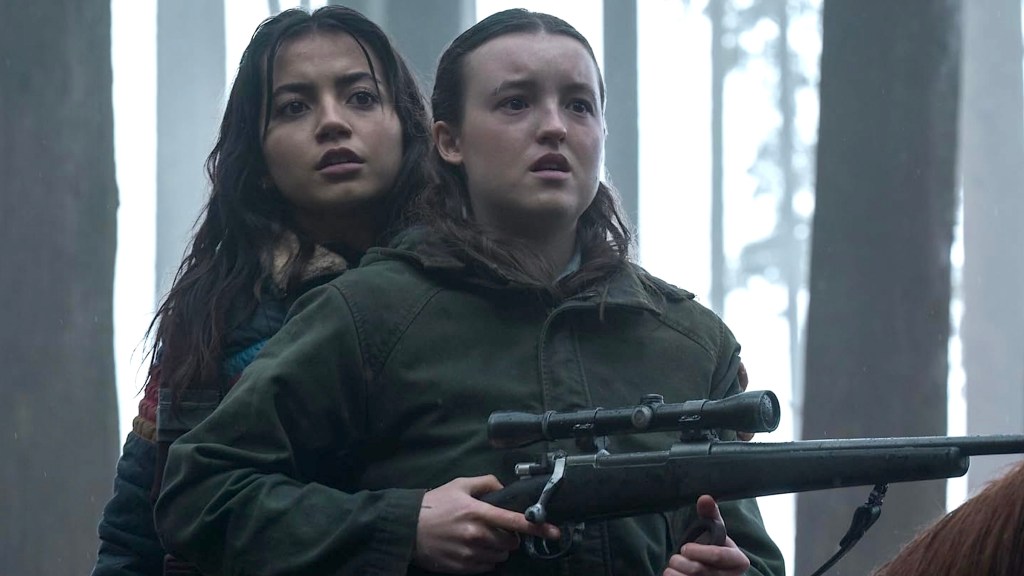The TV adaptation of The Last of Us Part II has one major issue getting in its way.
The Last of Us Season 2 has nearly reached its end, though its clumsy pacing is weakening this once-thrilling show. Set in a post-apocalyptic future ravaged by a fungal infection that turns people into zombie-like creatures, HBO’s The Last of Us adapts the two-part video game series of the same title. Following Joel Miller’s (Pedro Pascal) massacre of the Fireflies and rescue of miraculously-immune Ellie Williams (Bella Ramsey) at the end of Season 1, The Last of Us Season 2 turns the story on its head, as the murder of Joel sets Ellie off on a quest to exact revenge on Abby Anderson (Kaitlyn Dever). At the same time, warring factions emerge, and Ellie falls in love with Dina (Isabela Merced), who is also pregnant. Evidently, The Last of Us Season 2 adds many more story threads to the overarching plot, all revolving around Ellie’s journey for vengeance in the wake of losing Joel.
As of now, The Last of Us has been renewed for Season 3 and is expected to conclude with a fourth season. Splitting the second game into three seasons has significantly slowed down the show’s pace, while other narrative changes have veered Season 2’s focus away from the game’s intense portrayal of violence and retribution. The Last of Us Season 2’s acting performances are as exceptional as ever, and detailed visuals and set design make the show’s world feel real and terrifying. Still, a major pacing problem threatens to derail what started as a fantastic adaptation of the video games.
The Last of Us Season 2’s Meandering Pace Is an Issue

Above all, The Last of Us TV show is an adaptation, and it’s easy to understand why characters and events aren’t identical to the source material. Even so, it feels like The Last of Us Season 2 has lost the essence of the game. When playing The Last of Us Part II, an ever-present dread saturates the game’s atmosphere, and Ellie’s rising vengefulness is a marvel to witness. Additionally, the game’s switch to Abby’s point of view progressively reveals the characters’ similarities, forcing players to reckon with whose side to take. Even though The Last of Us TV series keeps Joel’s death at the beginning of Season 2 where it belongs, the subsequent slow pace has completely taken the sting out of it.
A three-month time jump from Joel’s demise makes Ellie and Dina’s journey to find Abby feel more like a fun field trip than the brutal, tension-filled endeavor it’s meant to be. Furthermore, Ellie’s elation upon learning of Dina’s pregnancy starkly contrasts with the resentment she expressed in the game — a moment meant to illustrate Ellie’s loss of herself to her desire for revenge. Ellie’s confrontation with Nora (Tati Gabrielle) in Episode 5 finally showcases the main character’s rage and thirst for revenge, but this was long overdue and feels like tonal whiplash when set amid so many lighthearted moments.
Season 2’s changes aren’t all bad, though. The Last of Us Part II wonderfully succeeds in telling a perspective-driven revenge story, however, some of its plot elements are better developed in the show. For example, The Last of Us Season 2 provides more depth and buildup to Ellie and Dina’s relationship, slowly hinting at their feelings for each other over four episodes before the two passionately profess their love. Moreover, Season 2 doesn’t delay delving into the conflict between the Seraphites and the Washington Liberation Front (WLF), primarily through Abby and Isaac’s (Jeffrey Wright) stories. Despite expanding on its source material, The Last of Us TV series has strayed away from what made the game great in Season 2.
The Last of Us‘s Pacing Problem Might Continue Beyond Season 2
Too many buffers and detours have gotten in the way of Ellie becoming increasingly consumed by revenge, and it looks like The Last of Us‘s slow pace and tonal inconsistency will persist after Season 2. Lengthening The Last of Us Part II‘s story to cover three seasons may grant the show an opportunity to characterize a broader portrait of the game’s post-apocalyptic world, but it comes at the cost of muddying the game’s message about cycles of violence. Only two episodes of Season 2 remain, and Season 3 is expected to be released in 2027. A two-year wait to arrive at the meat of The Last of Us Part II’s story in the TV show will not be fun for viewers, as Season 2’s meandering pace has pushed much of the action and suspense to later seasons. The Last of Us Season 1 proved that alterations to the game could improve the larger narrative while conveying the same tone and dramatic pacing, but in attempting to recreate this balance, Season 2 has lost its footing.
New episodes of The Last of Us release weekly on Sundays on Max.


-1743779359-q80.webp)